Tale of an Orphaned Classic Truck
What happens when the proprietor of a restoration shop decides to retire in the middle of a project? Just ask the owner of this 1950 Chevy 3100 pickup. He got the truck back partially assembled, but no one system complete, and boxes of miscellaneous parts. Plenty of parts (as we would learn) were missing.
The project languished at another shop untouched for a year before we were asked to take on the challenge of piecing the puzzle back together. It's one thing if you did all the disassembly and modifications yourself. It's quite another to pick up the pieces later.
Dubbed an 'AD' or Advanced Design, this era truck is popular in vintage truck circles. A healthy aftermarket supplies many reproduction parts as well as upgrades to suspension, steering, brakes, and drive train.
Our mission is to complete the truck so that it's drivable, safe, and pleasing to the eye.
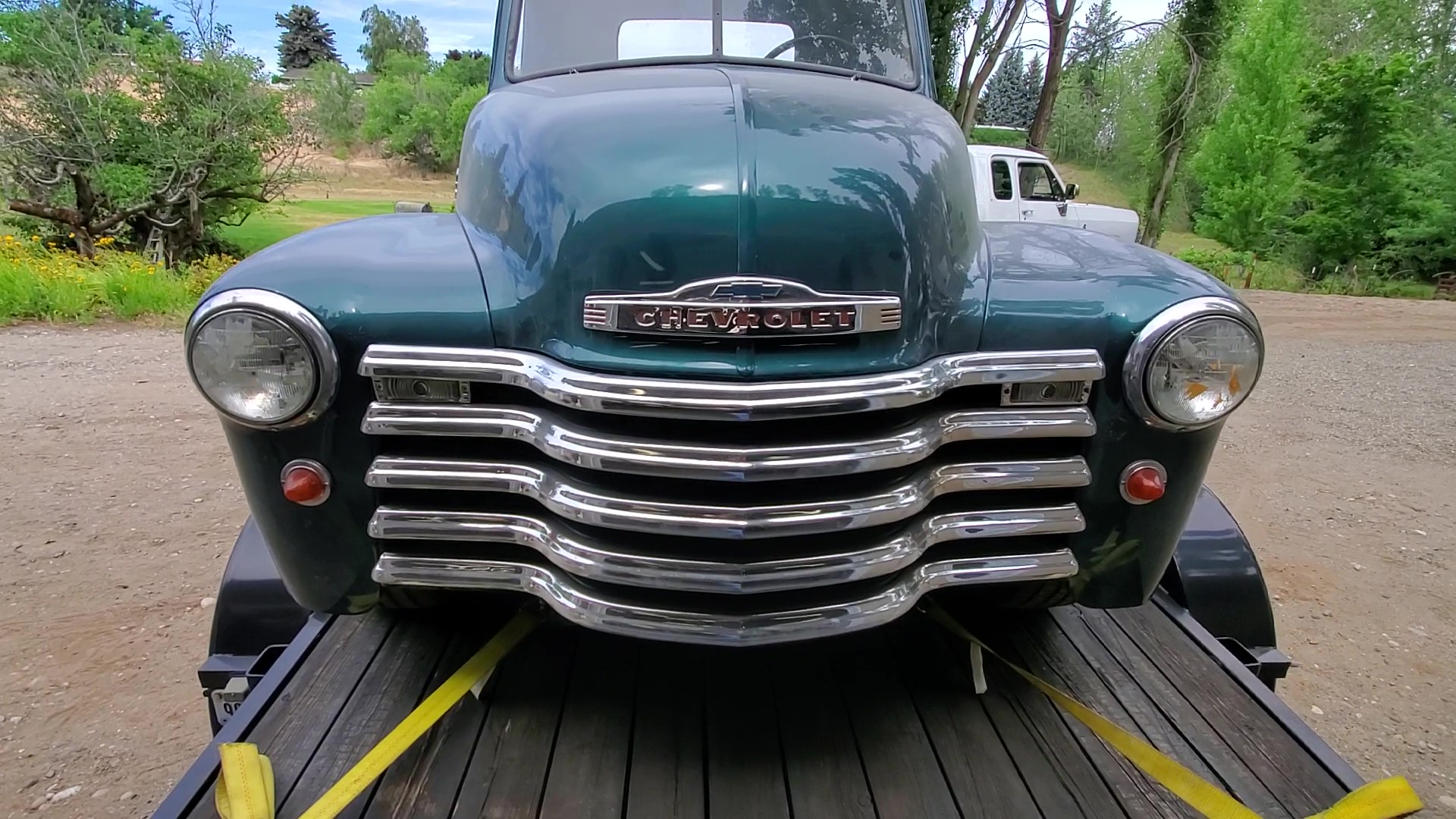
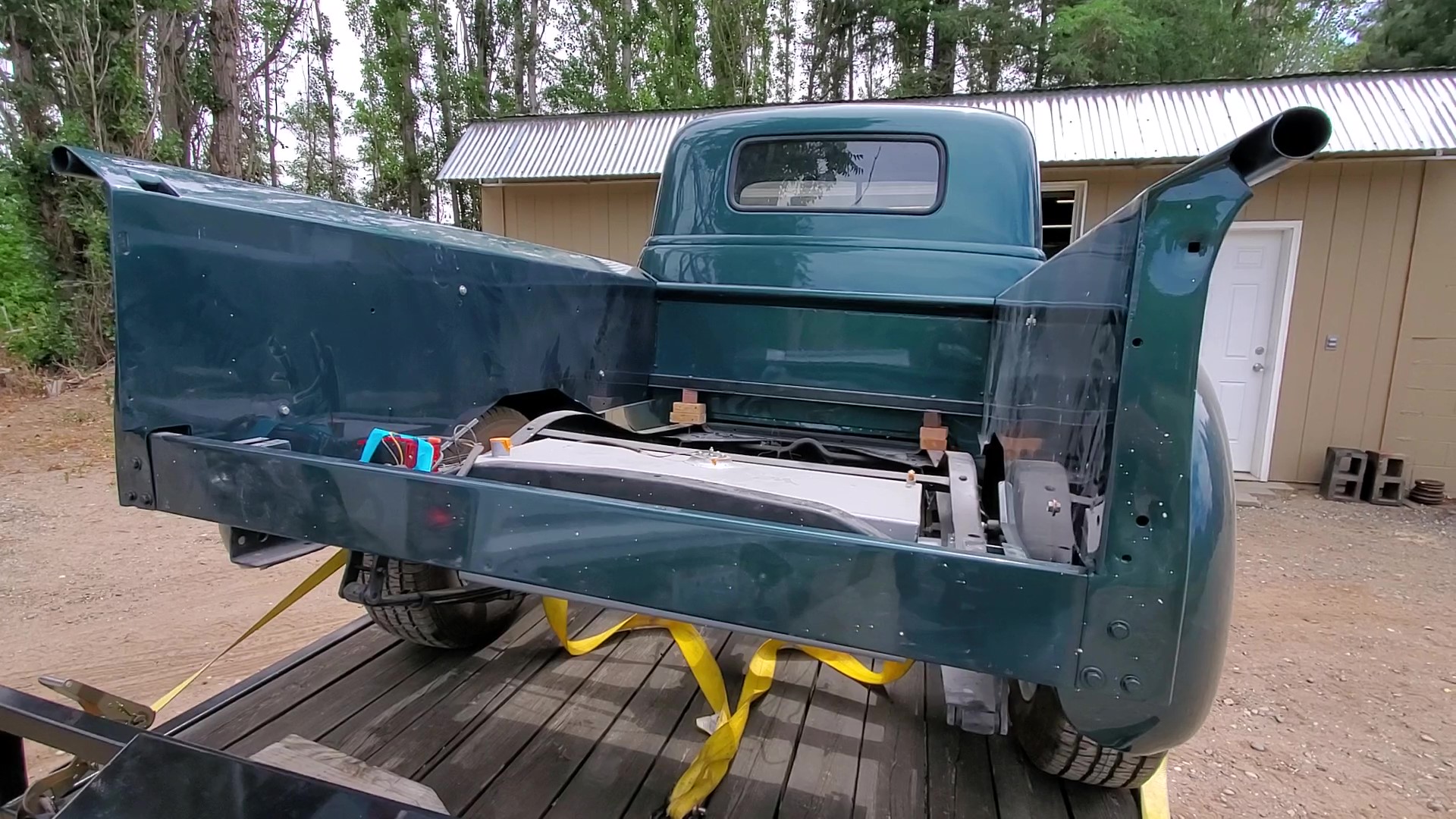
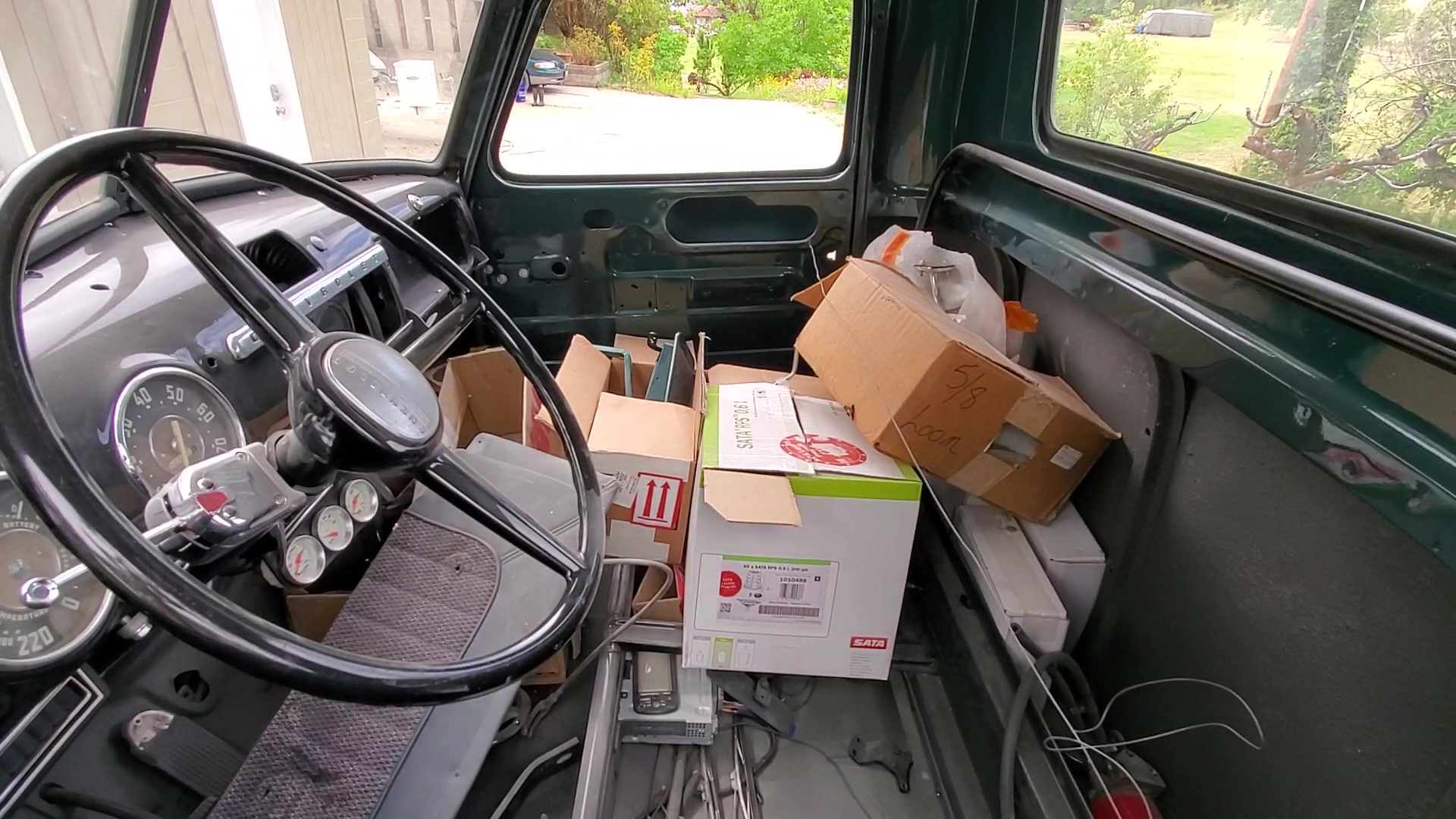
The first task was to assess what we had to work with - what parts were here, what was missing, and what type of modifications had already been made.
Aside from a boat load of missing pieces there were two issues (so far) that needed to be addressed before any assembly begun:
- The bed and fenders did not fit on the frame like they should.
- They had attempted to add rack and pinion steering.
On closer inspection, and with the aid of a tape measure, it became clear that the truck had been hit at the rear on the passenger side and bent the back half of the frame over to the driver side an inch or more. The rear axle stuck out past the fender on the right side. If the box can't be squared on the frame, the bed floor isn't going to fit.
There's nothing wrong with rack and pinion steering. Most modern cars with independent front suspension use it these days. It's just not a good idea when mounted to the frame of an old straight axle truck - and in this case made potentially worse when a 'dropped' straight axle is employed. (The aftermarket 3" drop axle lowers the front end for an improved look and stance). The real issue comes down to steering geometry and the phenomenon known as bump steer.
"Bump Steer: The term for the tendency of the wheel of a car to steer itself as it moves through the suspension stroke. Bump steer causes a vehicle to turn itself when one wheel hits a bump or falls down into a hole or rut. Excessive bump steer increases tire wear and makes the vehicle more difficult to handle on rough roads."
"More difficult to handle..." is one way to put it. Some over on the Stovebolt forum would call it a death trap. Add the lack of 'Ackermann' angle that comes with a front steer setup (more pesky geometry) and there are too many downsides. So.
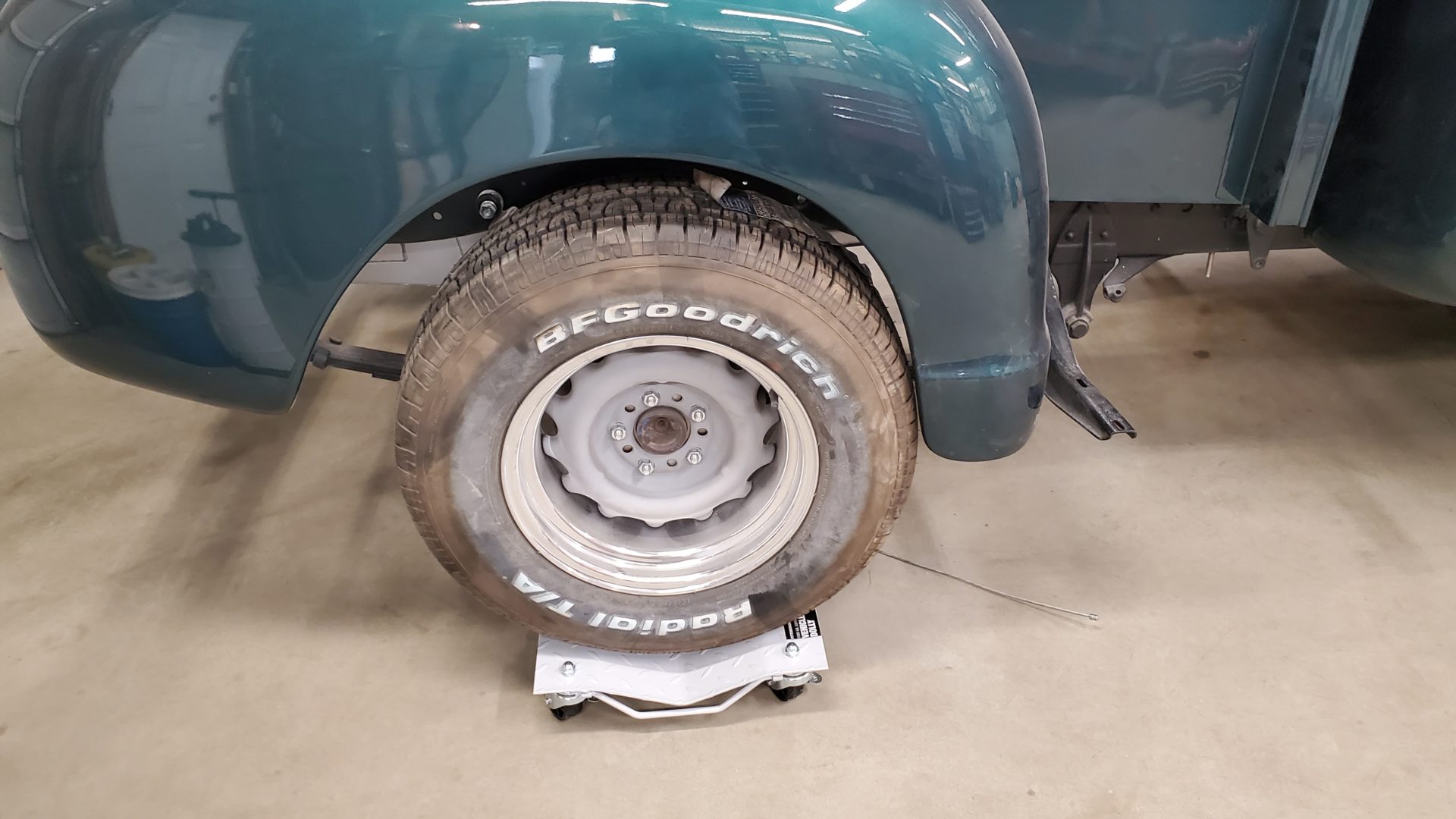
Where to start? We pulled the bed and front clip as an entire assembly for easy access to everything that will need to be corrected or finished.
We quickly discovered that they didn't add connectors or junctions anywhere to the aftermarket wiring harness. We cut the harness and will deal with that later.
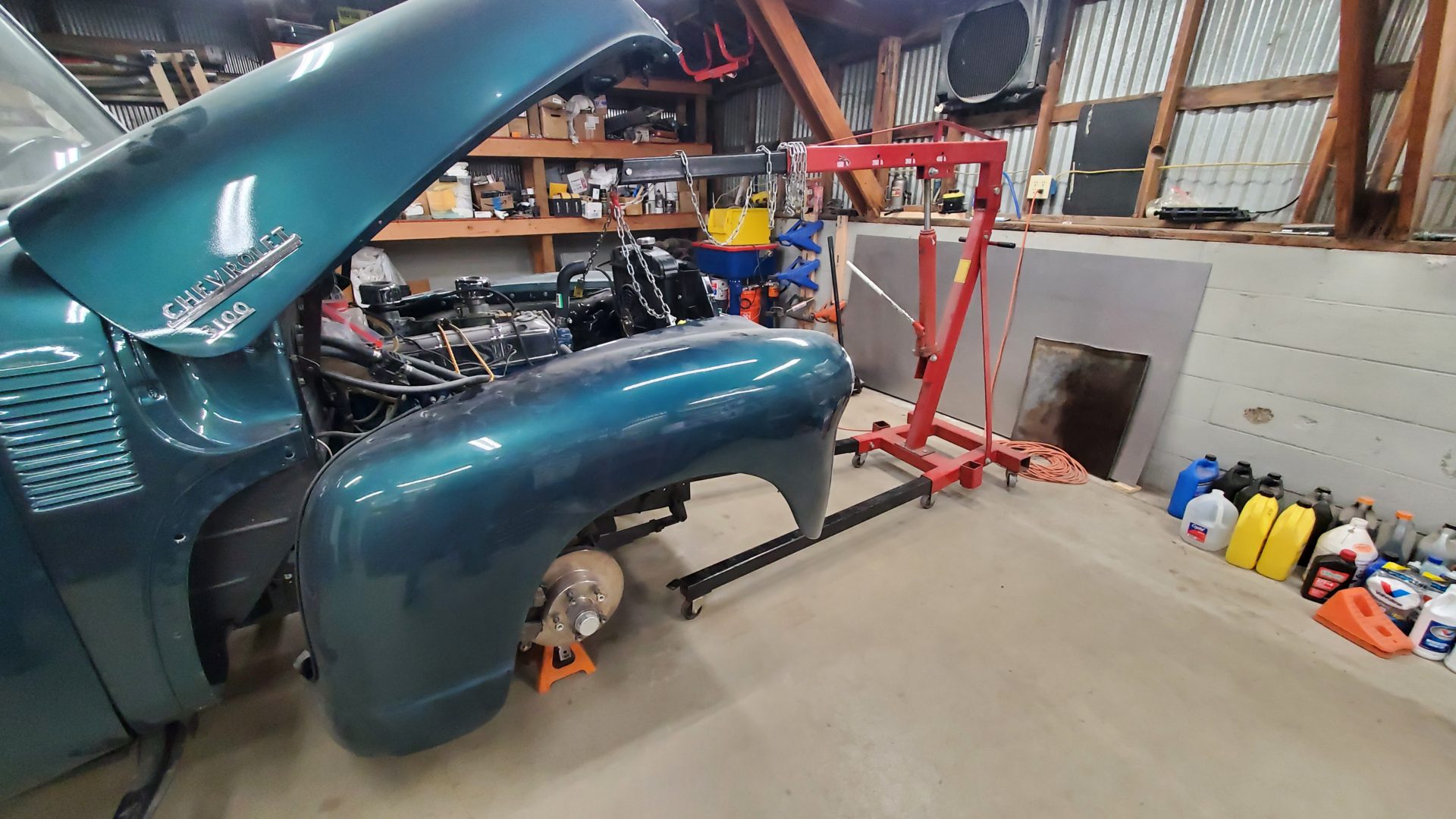
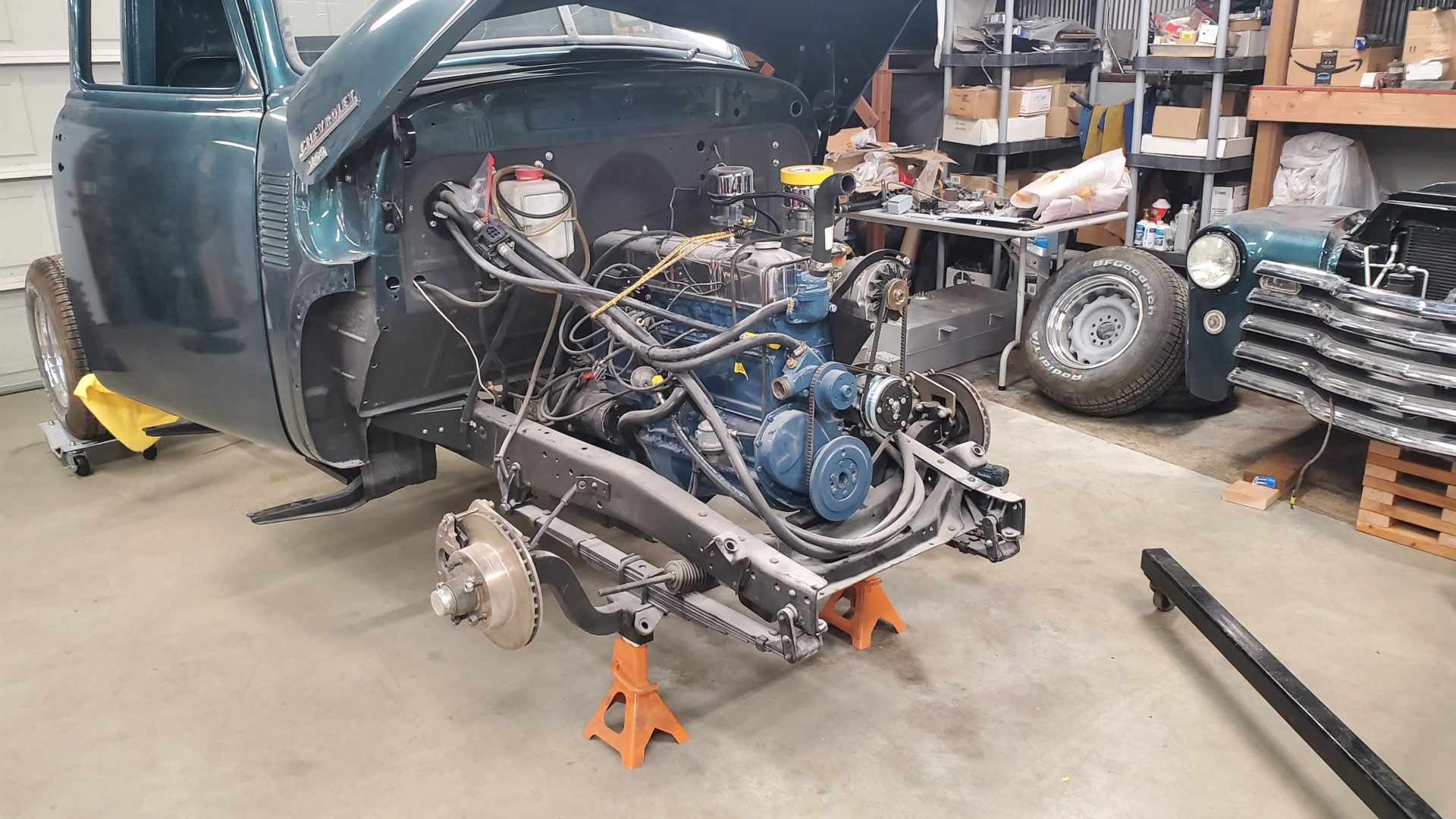
We located a donor chassis (4 hours away on the coast) that has the original parts we'll need to restore the steering to its original design - in general. We'll update to modern tie rod ends, add more adjustability, and account for the dropped axle with some geometry corrections.
Power steering might be a nice upgrade but the previous builder added an A/C system so there isn't room for a power steering pump. If manual steering using an original gear box is not to the owners' liking, there's another option to explore which we can talk about another time.
The donor chassis will also provide the missing brake and clutch pedal linkages and, worse case, the frame itself if the original cannot be repaired.
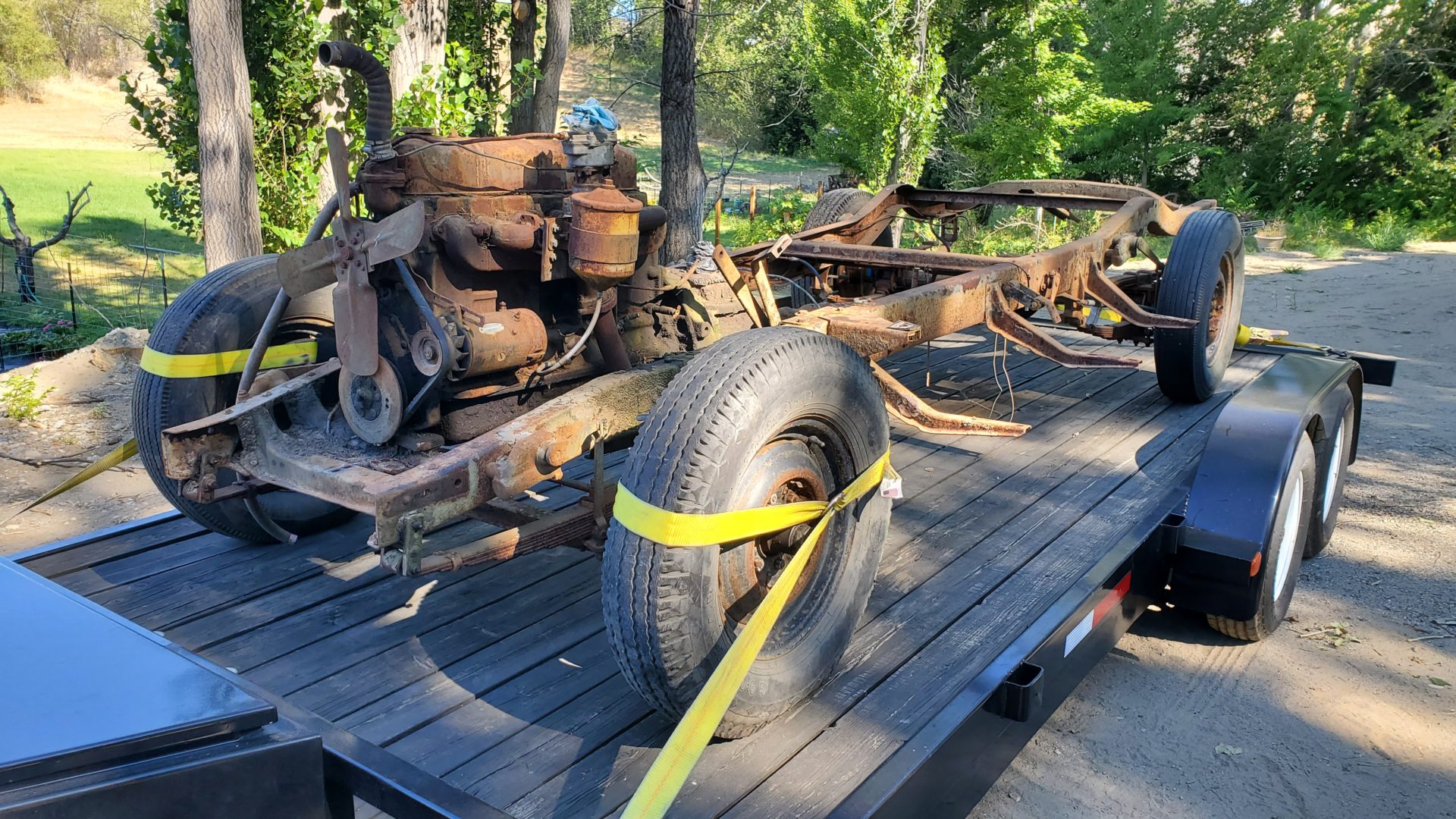
At this moment, the chassis is at the Cascade Auto Center body shop for a Saturday of freelance frame straightening. We'll test fit the bed and, if all goes well, get it back to the shop for some parts swapping.
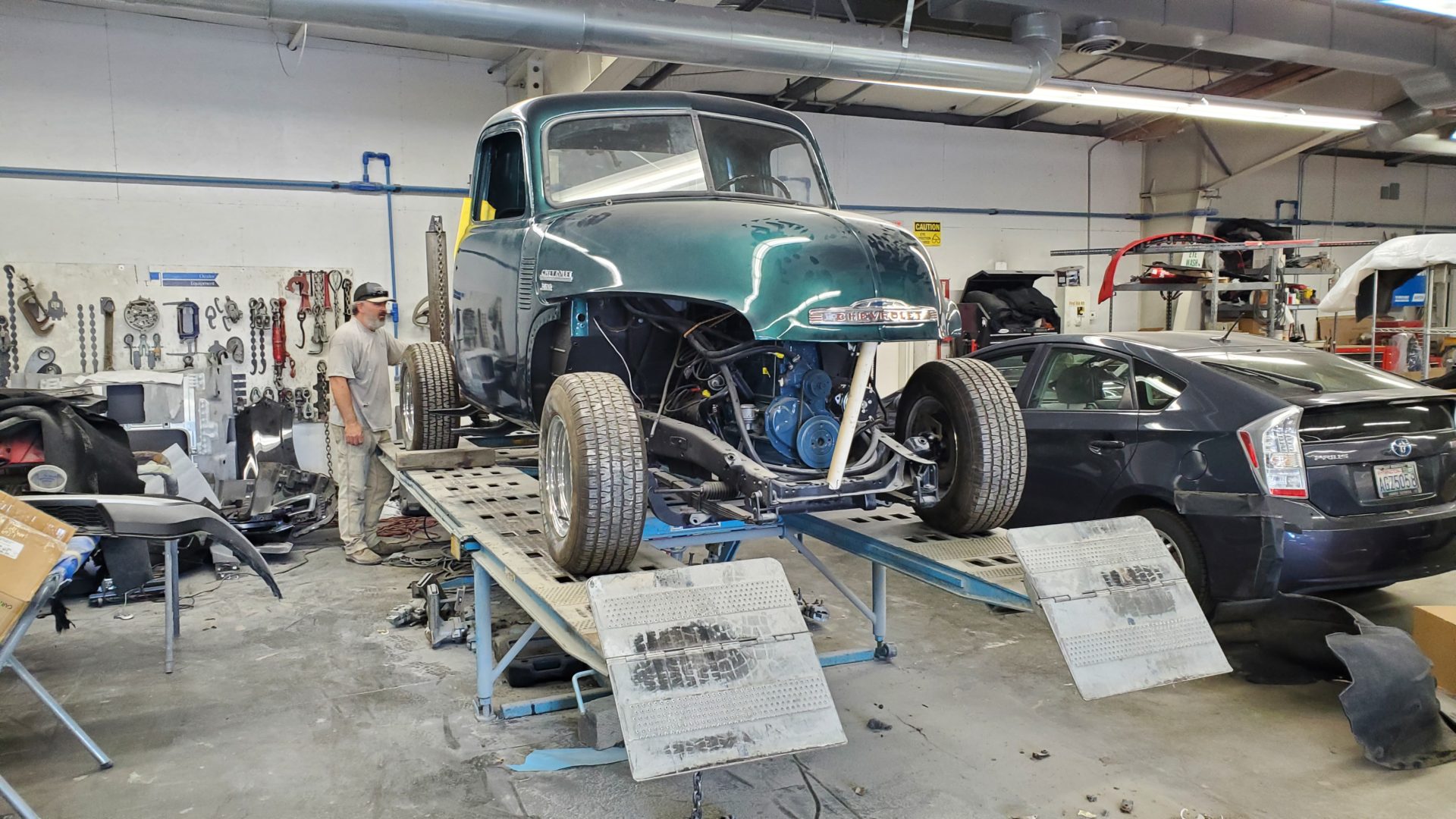
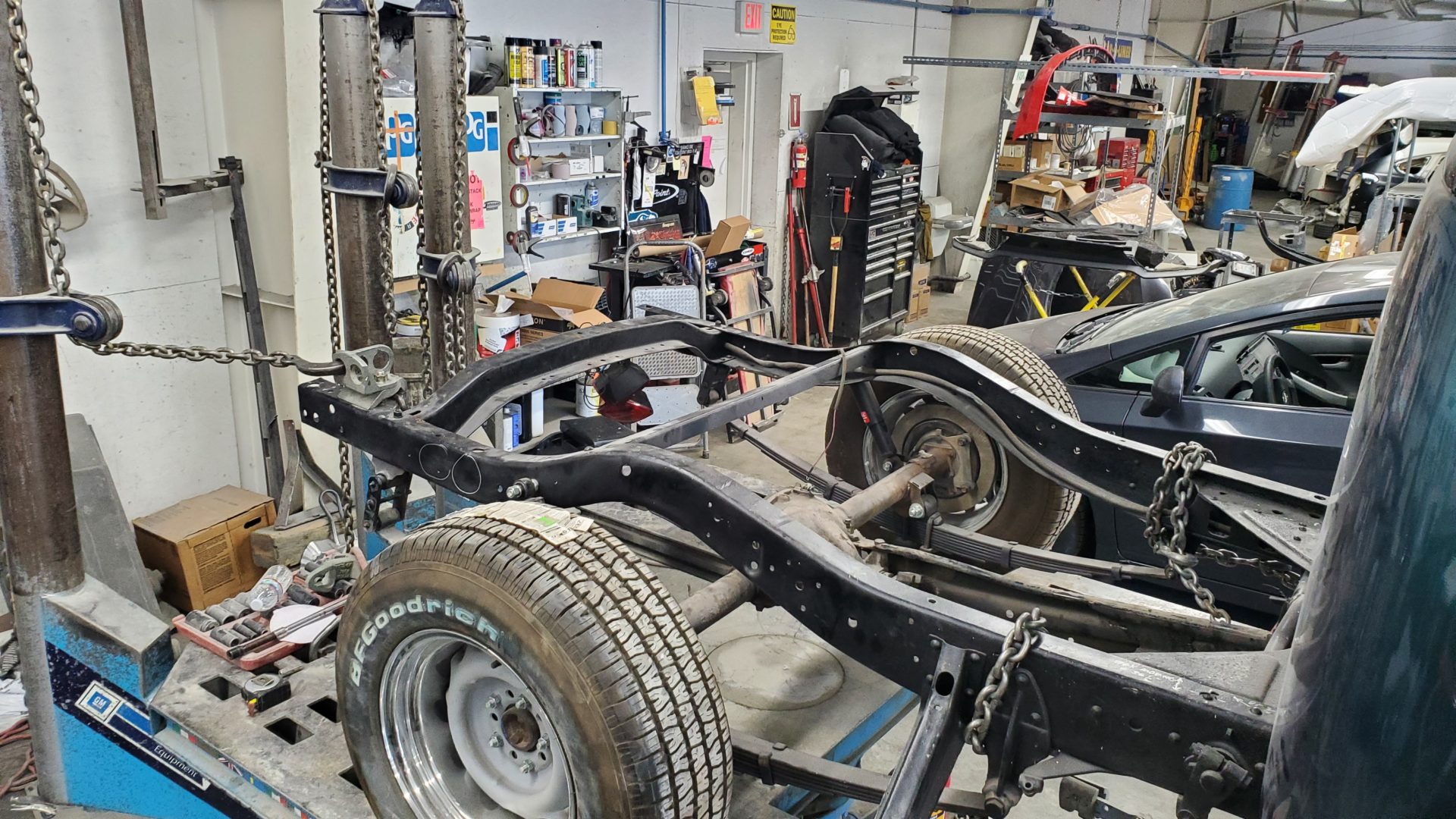
Stick around. We'll chronicle the challenge of this orphaned Chevy 'AD'.
